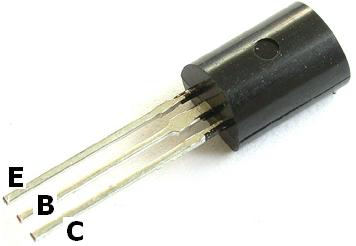INTRODUCTION TO INFORMATION AND COMMUNICATION TECHNOLOGY (ICT)
WHAT IS ICT?
ICT is the technology required for information processjavascript:void(0)ing, in particular, the use of electronic computers, communication devices and software applications to convert, store, protect, process, transmit and retrieve information from anywhere, anytime.EVOLUTION OF COMMUNICATION
Communication has improved and evolved to facilitate our daily activities. In the 21st century, everything related to communication utilizes technology to ‘send out’ or disseminate information to a wider audience. Information can be ‘sent out’ in many ways. The inventions of cellular phones, television and other electronic devices are important in enhancing communication.
The tools to transmit information are the
- telephone
- television
- radio.
- internet
We need information to make decisions and to predict the future. For example, scientists can detect the formation of a tsunami using the latest technology and warn the public to avoid disasters in the affected areas.
Information is knowledge and helps us to fulfill our daily tasks. For example, forecasting the stock exchange market
COMMUNICATION
Communication is an act of transmitting messages. It is a process whereby information is exchanged between individuals using symbols, signs or verbal interactions. Previously, people communicated through sign or symbols, performing drama and poetry. With the advent of technology, these ‘older’ forms of communication are less utilised as compared to the use of the Internet, e-mail or video conferencing.
Communication via telephone
COMPUTER GENERATIONS
FIRST GENERATION (1940-1956)
The first generation of computer were huge, slow, expensive and often unreliable. In 1946, two Americans, Presper Eckert and Willian Mauchly build the ENIAC (Electronic Numerical Integrator and Computer). It use vacuum tube instead of mechanical switches of the MARK 1.
SECOND GENERATION (1956-1963)
The creation of transistor spark the production of a wave of second generation computer. Transistor was small devices use to transfer electronic signals across a resister. Transistors had many advantages compared to other hardware technology.
• transistors were smaller than vacuum tubes
• they needed no warm up time
• consumed less energy
• generated much less heat
• faster and more reliable
THIRD GENERATION (1964-1971)
In the third generation era, the IBM 370 series were introduced in 1964. It came in several models and sizes.It was used for business and scientific programs. Other computer models introduced were CDC 7600 and B2500.
The development of integrated circuit (IC), signal the beginning of the third generation computers. Silicone chips were manufactured in 1961 at the Silicone Valley. Then came the integrated circuit technology, which had reduced the size and cost of computers.
Advantages
A new concept in this generation was that of a family of computer which allowed computer to be upgraded and expanded as necessary.
FOURTH GENERATION (1971-PRESENT)
It took only 55 years for the 4 generations to evolve. The growth of the computer industry developed technologies of computer inventions. There are many types of computer models such as:
• Apple Macintosh
• IBM
• DELL
• ACER
In 1971 Intel created the first microprocessor. In 1976, Steve Jobs built the first Apple computer. Then, in 1981, IBM introduced its first personal computer.
During the fourth generation, hardware technology such as silicone chips, microprocessor and storage devices were invented.
FIFTH GENERATION (PRESENT & BEYOND)
The fifth generation computers are technologically advance and are still being development to become more efficient.The inventions of new hardware technology in the fifth generation have grown rapidly including many other modern computer devices such as :
processor
robotics
virtual reality
intelligent systems
NEW ERA COMPUTER
After the fifth generation computer, the technology of computer has become more advanced, modern and sophisticated. The latest invention in the era of computers are :
• Super Computers
• Mainframe Computers
• Mini Computers
• Personal Computers
• Mobile Computers
In the new era of computers, expert system such as teleconferencing and speech-recognition system have been invented as part of modern world communication tools.
USAGE OF ICT IN DAILY LIFE
EDUCATION
Today, most schools and higher educational institutions have computers in the classroom for teacher and students. In education, teachers, students, researchers and school administrators benefits from the usage of ICT.
Teachers
Teachers use computers to research for teaching materials, participate in online forums and online conferences as well as
to aid their teaching.
Students
Students use the computers as a reference tool. They use computers to browse the
Internet to look for information.

















